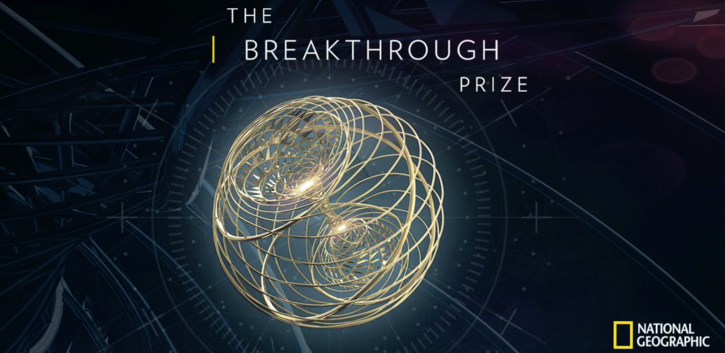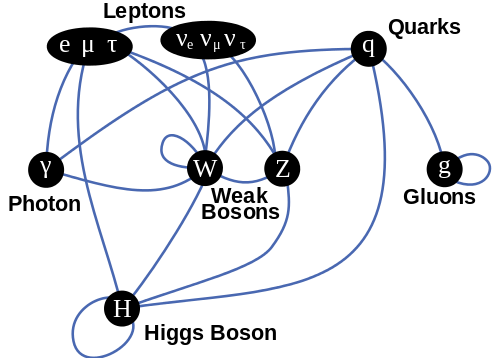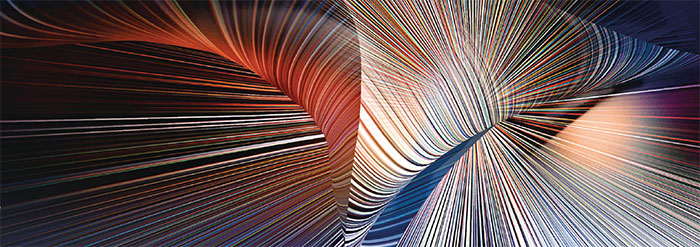Clunk. That’s the sound of my head hitting my desk. Because the $3m special breakthrough prize has just been awarded to the “discoverers” of supergravity. Yes folks, that’s one of those mathematical “discoveries”. It isn’t like discovering America or penicillin. It’s the sort of “discovery” that people peddle when they’re hyping a hypothesis for which there’s no evidence at all. The prize was awarded to Sergio Ferrara, Daniel Freedman, and Peter van Nieuwenhuizen for an “Influential Theory Combining Gravity with Particle Physics”. Only it isn’t influential at all. Instead it’s hogwash. But there again, what else would you expect from a selection committee which includes such luminaries as Nima Arkani-Hamed, Michael Green, Alan Guth, Andrei Linde, Juan Maldacena, and Kip “time travel” Thorne. And of course the great Edward Witten, chairperson and genius. That’s the Witten who must be a genius because nobody understands a word he says. The Witten who dabbled in topological quantum field theory, but doesn’t know that the Breakthrough Prize trophy resembles the topology of an electron:
 Breakthrough prize trophy image from National Geographic
Breakthrough prize trophy image from National Geographic
The blurb on the Breakthrough Prize website says Ferrara, Freedman, and van Nieuwenhuizen are “the architects of supergravity, a highly influential 1976 theory that successfully integrated the force of gravity into a particular kind of quantum field theory”. Did you catch that? It said 1976. That’s 43 years ago. Have you seen supergravity having any influence in those 43 years? Me neither. It wasn’t a breakthrough, and it’s had no influence whatsoever. The blurb also says a quantum field theory is “a theory that describes the fundamental particles and forces of nature in terms of fields embodying the laws of quantum mechanics”. Only quantum field theory doesn’t describe the photon, or the electron, or how electromagnetism works. It doesn’t even tell you how a magnet works.
The Standard Model is a patchwork quilt of a theory
The blurb goes on to say the 1960s and early 1970s saw the construction of the Standard Model, a quantum field theory that “still remains the most precisely verified theory in physics”. Oh yeah? When you know about the misconceptions in particle physics, you know that the Standard Model is dripping with errors and omissions, and totally lacking in foundation. Does the Standard Model tell you how pair production works? No, because there’s a hole in the heart of quantum electrodynamics, which is where the Standard Model started. Even to this day the Standard Model says photons don’t interact with photons, even though they do. The picture below, which you’ve all seen before, has a caption saying “Connections denoting which particles interact with each other”:
 Public domain image by TriTertButoxy, see Wikipedia
Public domain image by TriTertButoxy, see Wikipedia
Gluons interact with gluons, but photons don’t interact with photons. According to the Standard Model, electrons don’t even interact with positrons. Even though they do. Talk about falling at the first hurdle. And the second, because the Standard Model doesn’t even tell you what charge is. Instead it tells you the electron is a point particle, even though it’s the wave nature of matter. Then it tells you there’s 25 different “fundamental” fields. Then without batting an eyelid it slaps on another layer of fantasy to tell you all about the electroweak interaction. That’s where a 939 MeV neutron decays because an 80GeV W boson pops out of a 4.8 MeV down quark, converting it into a 2.3 MeV up quark. POP!
 Weak interaction image from nuclear-power.net
Weak interaction image from nuclear-power.net
Yea verily. It’s based on a model of leptons which is nothing of the sort. That’s where electrons move the way that they do and neutrons decay because of unseen “messenger particles” popping in and out of existence. POP! Even though hydrogen atoms don’t twinkle and magnets don’t shine. Even though the electron goes round in circles in a uniform magnetic field because it’s a “dynamical spinor” subject to precession, rather like a boomerang. Does the Standard Model tell you why the inertia of a body depends upon its energy-content? Or why the mystery of mass is a myth? Nope. It flatly contradicts E=mc² and tells you tales about the fabulous Higgs boson instead. On top of that sits yet another layer of fabulous beasts called quantum chromodynamics. It’s the theory of the strong interaction between quarks and gluons. Even though nobody has ever seen a quark or a gluon. Even though the gluons in ordinary hadrons are virtual. Even though like Martin van der Mark said, you can’t fit a longer-wavelength 2.3 MeV quark inside a smaller-wavelength 938 MeV proton. All in all, the Standard Model is a patchwork quilt of a theory, so full of fairy tales and lies-to-children it’s like Frankenstein’s monster. A monster that has stalked the land for fifty years. I look forward to the day when they kill it with fire and bury it deep. With a stake through the heart so it never rises again.
The Standard Model is not complete
But I digress. The breakthrough blurb goes on to say the Standard Model is not complete because it left out gravity, and lacks “any particle that could explain dark matter”. That’s right, it doesn’t tell you how gravity works, and isn’t going to any time soon. Because it doesn’t include the simple fact that light curves like any wave curves. Like Einstein said, it’s because “the speed of light is spatially variable”. Then matter falls down because of the wave nature of matter, like light in a closed path. Like Schrödinger said. Because like Einstein said, a gravitational field is a place where space is “neither homogeneous nor isotropic”. Not a place where gravitons are popping in and out of existence, spontaneously, like worms from mud. POP! POP! POP! And as Einstein also said, “the energy of the gravitational field shall act gravitatively in the same way as any other kind of energy”. That gravitational field energy isn’t made out of particles. So you can hazard a guess that dark matter isn’t made out of particles either. Then the raisin cake analogy and conservation of energy tells you that every galaxy is embedded in an island of higher-energy-density space, and is surrounded by inhomogeneous space. Which is what a gravitational field is.
Supersymmetry is pseudoscience
But I digress again. The blurb burbles on, saying in 1973 physicists developed a principle called supersymmetry which extended the Standard Model to include a new family of particles. I just love this: “supersymmetry postulated that each of the known particles had an unseen partner”. Uh oh, somebody doesn’t know what a photon is, or what an electron is, or how pair production works. They don’t know that the electron is a 511 keV photon in a double-loop spin ½ phase-invariant trivial-knot chiral closed path. That’s why the spinor is reminiscent of a Möbius strip. But they went ahead anyway, and proposed a selectron when they didn’t even know what an electron is. They also proposed a photino. And gluinos and zinos and winos. And sneutrinos and higgsinos and squarks:
 Image copyright STFC / Ben Gilliland, see The United States at the LHC
Image copyright STFC / Ben Gilliland, see The United States at the LHC
And get this: “Though the existence of these ‘super-bosons’ and ‘super-fermions’ is yet to be confirmed experimentally, supersymmetry is an attractive idea because of its explanatory power”. LOL. There’s been no evidence of sparticles for 46 years, and supersymmetry explains absolutely nothing. It has no foundations. It’s just another layer of juju sitting on top of the Standard Model. It might relate “the characteristics of fermions and bosons as manifestations of an underlying symmetry”, but they aren’t manifestations of an underlying symmetry. There are no super-bosons. There are no super-fermions. There is no underlying symmetry. Thinking there is, is like studying the pretty patterns of the firework explosions on New Year’s eve, thinking it’s going to teach you everything there is to know about gunpowder. It won’t. Symmetry is no substitute for understanding. And because there’s no understanding of the basics like the photon, the electron, and how pair production works, supersymmetry is just cargo-cult science. Supersymmetry is pseudoscience.
Quantum gravity is a castle in the air, so is supersymmetry, and so is supergravity
However that didn’t stop Ferrara, Freedman, and van Nieuwenhuizen, who “set their minds” to extending supersymmetry to include gravity. Their collaboration culminated “in a laborious series of calculations on a state-of-the-art computer”, whereupon “they succeeded in constructing a supersymmetric theory that included ‘gravitinos’ – a super-fermion partner to the graviton, the gravity-carrying boson”. Seen any gravitons recently? Didn’t think so. Seen any gravitinos recently? Quite. So where’s the evidence for supergravity? There isn’t any. I rest my case M’lud.
 Supergravity directions image from the CERN courier article the many lives of supergravity
Supergravity directions image from the CERN courier article the many lives of supergravity
The bottom line is that there’s no connection to reality here. This is a mathematical tower of Babel, with no relevance to experimental physics. Yet the blurb tells us that “in the four decades since its development, supergravity has had a powerful influence on theoretical physics”. Huh? Er, no it didn’t. It didn’t show that “supersymmetry was capable of accounting for all the phenomena we see in the real world, including gravity”. It didn’t represent “a completion of the current understanding of particle physics”. And no, it didn’t provide a foundation for the attempt to build a full theory of quantum gravity. Because quantum gravity is a castle in the air, so is supersymmetry, and so is supergravity.
A tangled web of conjecture and hypothesis and speculation
However in 1981, Ed Witten “showed that the theory can be used to give a rather simple proof of what had been an extremely complicated theorem in general relativity”. Then supergravity was integrated into string theory, and “was a crucial ingredient in the 1984 proof by Michael Green and John Schwarz that put superstring theory on a stable mathematical footing”. They proved that it was correct, you see? The proved that the Emperor’s New Clothes are very fine indeed. Even though there’s no scientific evidence whatsoever. And for the cherry on top of this layer cake of flimflam, supergravity also played an important role “in the development by Juan Maldacena and others of holographic theories of gravity”. Woo! You can read something about that in the 2014 science news article holography entangles quantum physics with gravity. It says Maldacena showed that quantum math describing physics in three spatial dimensions without gravity can be equivalent to math describing a four-dimensional space with gravity. Woo! And that holography might be the key to merging gravity with quantum mechanics. Woo! And that some physicists have proposed that gravity has something to with quantum entanglement. Woo! Oh FFS, it’s a tangled web of conjecture and hypothesis and speculation that’s utterly divorced from the hard scientific evidence, the Einstein digital papers, and the bleeding obvious. And for all that, supergravity doesn’t even tell you how gravity works.
Breakthrough prize criticized for rewarding failed ideas
But never fear, because there’s a Physics World article with a very nice title: Breakthrough prize criticized for rewarding ‘failed ideas’. It’s by Michael Banks, who said this: “The announcement, however, has been met with derision by some who say that such a high-profile physics prize should not go to a speculative theory that has not been tested experimentally”. Good man. He quotes Sabine Hossenfelder saying this: “The community needs to admit failure and think about what went wrong, not put lipstick on a pig”. I couldn’t find that on her blog, but I like it. Banks also quotes Peter Woit saying this: “Exactly the possible damage I worried about due to this kind of prize has happened and is ongoing. Due to its size, the prize has got a lot of attention, generating a lot of misleading positive publicity for failed theoretical ideas”. Can’t argue with that, even though Woit censors any criticism of the Standard Model on his blog. Banks even shows you the horse’s mouth, namely the 1976 supergravity papers progress toward a theory of supergravity and properties of supergravity theory. They are of course paywalled so you can’t see how bad they are unless you fork out thirty-five bucks a pop. Unless of course you know about a little something called Sci-Hub where both papers are available for free. Then you can see that they’re not just free, they’re physics free.
Poor old Yuri Milner
Poor old Yuri Milner. I am reminded of Alfred Nobel, whose prizes have done more harm than his dynamite. Milner tried to do something good and noble to help physics along, but he didn’t keep control, and now his prize has been hijacked by the quacks and charlatans who caused all the problems in the first place. What a tragedy. What a tragedy that fundamental physics has turned into an idiocracy. How did it come to this? Now there’s a tale worth telling.
Note 15th August 2019: Talking of Physics World, see their article Light can scatter from light, CERN physicists confirm. That’s good to hear. However this isn’t: “In classical electrodynamics, photons cannot interact with each other because they have no charge. At the same time, however, quantum electrodynamics predicts that two photons can scatter off each other by exchanging virtual charged fermions or W bosons”. Classical electrodynamics doesn’t say light doesn’t interact with light. Quantum electrodynamics does. And now light interacting with light is somehow big news, despite the fact that SLAC demonstrated light interacting with light in 1997? Only now CERN have demonstrated it, it’s because photons exchange virtual fermions or W bosons? Oh, pull the other one.
As always I enjoy reading your posts I have that same supergravity feeling in the pit of my stomach.
I recently came across this https://arxiv.org/pdf/physics/0012025.pdf by Vesselin Petkov and found that he is expressing many similar ideas to what you have brought up. I also found this: http://spacetimecentre.org/vpetkov/ but haven’t had time to dig through some of the linked papers yet. I am curious what your thoughts are on what he has to say.
Neil
Whoa, thanks Neil. Why have I never heard of Vesselin Petkov before? Or his paper https://arxiv.org/abs/physics/0012025? This is just so true: “It is argued in this paper that if that promising research path had not been inexplicably abandoned after the advent of relativity and quantum mechanics, the contemporary physics would have revealed not only the nature of inertia, mass, and gravitation, but most importantly would have outlined the ways of their manipulation”. I like this on page 3: “the anisotropy in the velocity of electromagnetic signals (for short – the velocity of light).” And I just love this on page 5: “there are strong arguments indicating that the correct interpretation of the formalism of general relativity should be in terms of anisotropic, not curved spacetime”. This guy wrote all this before the Einstein digital papers were online. Almost twenty years ago.
.
What’s a bit sad though is that he has no electron model. He obviously hasn’t read stuff by Williamson and van der Mark. And he doesn’t know about Percy Hammond’s electromagnetic geometry or spatial curvature, so he hasn’t got a good foundation for when he’s talking about strong and weak forces on page 9. But nevertheless, this is great: ”It is evident that in this case the electromagnetic mass theory predicts zero neutrino mass and appears to be in conflict with the apparent mass of the Z0 boson which is involved in the weak interactions”. Spot on, Vesselin! Yes, gravitation is electromagnetic in origin.
.
What’s so sad is that we never get to hear about stuff like this in the science media. Thanks again Neil for letting me know. I’ll have a good look at http://spacetimecentre.org/vpetkov/.
amusing as always. honestly think there may be something )( to supersymmetry beyond pure speculation, speculating myself (knowing very little about it). a soliton model of physics would suggest there is a deep symmetry between fermions and bosons.
& find it rather lame that contrarians like woit + hossenfelder dont have the guts to avoid heavy moderation on their blogs. otherwise am rooting for them. “lipstick on a pig”. wow, reminds me of the controversy over sarah palin. amazing that hossenfelder would use that analogy, doesnt she know the sexist baggage connotations it carries? lol! ps thx for dropping by the blog.
My pleasure vzn. I got an email. Yes, Woit and Hossenfelder present themselves as white-knight champions of rationality, but that isn’t how it really is. I’m not a fan of symmetry. I think it’s like thinking you can study the pretty patterns of the firework explosions on New Year’s eve to learn about gunpowder*. It’s no substitute for understanding. IMHO physicists need to understand the photon, the electron, and how pair production works before proposing a selectron.
.
* I’ve changed the post to include this nice little analogy.
Hey John , Thanks for the Scientific American link, unfortunately it reeks of mere rubber stamping. It is also wonderful that more likeminded scientists and fans are contributing to your blog. Also thoroughly enjoyed your very last essay, too bad someone other than Dr.Howard,Dr.Fine,& Dr.Howard couldn’t have won. In closing I would like to state that exorbitant monetary inflation has been effecting most of modern physics lately : the price of Weinberg’s Toilet has skyrocketed up to $ 3 million greenbacks !
It’s all part of the hype and the hogwash, Greg. I’ve just looked at it again, and it makes me cringe and seethe all at the same time:
.
https://www.scientificamerican.com/article/supergravity-snags-super-award-3-million-special-breakthrough-prize/
.
When the history of these physics dark ages is written, people will have plenty to say about the role of the media in all this. They are complicit. They don’t bite the hand that feeds them. The woo-mongers and the woo-peddlers are in cahoots.
.
Are you referring to the three stooges? Weinberg’s toilet is full of sh*t and it stinks to high heaven. But if people like Mark Suckerberg wants to throw his money away, I don’t think I can stop him.
Yes Sir, the three stooges indeed. I do have a serious question : why is it so important to have one grand unification theory , so necessary to combine gravity to the standard model,ect. ? If it is accomplished will it translate to any new breakthroughs in applied physics, make our everyday life any better ?
I don’t think it’s important to combine gravity with the Standard Model. I think the Standard Model is so badly wrong it’s got to be replaced. But I do think it’s important to understand gravity along with electromagnetism and everything else. Understanding means we can work out how to do things. How to make things. Useful things:

 “>
“>
.
The Standard Model is not so much a model as a smothering octopus. I was convinced of this when I went to a lecture by the Nobel Prize winner Art McDonald. He was introduced by the Perimeter Institute lead Neil Turok. Turok made the statement that the neutrino mass and lepton changes discovered at SNO were ‘Part of the Standard Model’. They certainly were not when the neutrino detector in Sudbury was commissioned. Indeed Art gave Neil a pretty dark look when he said that. You could ask 10 people about that and get 10 different answers.
Thus the Standard Model is still at its peak – it has become complicated and ill defined to such an extent that it can ‘explain’ virtually anything.
It is a fallacy that scientific models fail when they disagree with facts. The real mechanism seems to be that something better in some small corner comes along and the ruling paradigm slowly falls into disuse.
Supersymmetry aims to be the bridge that linking the condition where one object cannot be at two states at a time, with a situation where the same object at its minute scale can be of different state simultaneously.
But what if all of the known forces (gravity, electromagnetic, strong and weak nuclear forces) are originated from one common and even greater particle? All the powerful and ever governing ability is coming from one very humble yet great particle. This particle origin that could make sense is what we call Supersymmetry Particle.
Sorry Vyner, your comment went into the spam folder. I don’t know why.
.
As for your “what if” query, the messenger particles of QED are virtual photons. They’re virtual photons, not real photons. The electron and the positron move towards one another and around one another because they’re “dynamical spinors”. Not because they’re throwing photons back and forth. Their motion is somewhat like the motion of counter-rotating vortices. Gravity isn’t associated with any particle. When the path of a photon curves downwards it isn’t because gravitons are flying around. It’s because there’s a local gradient in the speed of light. Supergravity is based on a non-understanding of gravity, and Supersymmetry is based on a non-understanding of the photon and the electron.
I agree with that Tom. The Standard Model is complicated and ill defined, and is a moveable feast. It’s still around despite the fact that it doesn’t agree with the facts. But I think that’s because interested groups like CERN can’t admit that it’s in any way incorrect, because to do would contradict their much-celebrated “discoveries”. I’m sure that people like Gian Francesco Giudice know this, but don’t have the courage to come out and say it. So I don’t think this ruling paradigm isn’t going to slowly fall into disuse. I think it’s going to crash and burn.